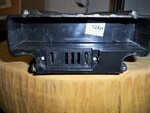bikerjohn
Well-Known Member
The 36v 12Ah battery for my EG Zurich is losing reserve capacity and maybe should be replaced. I have nearly 300 recharge cycles and 5100 miles tallied. The battery seems to be running out of power more quickly than when it was new. Making a call to (Link Removed - No Longer Exists) and speaking with the shop owner, it seems fairly routine getting a replacement for about $500.
During my talk with the shop owner, Paul Morlock, he mentioned that fully discharging the battery before recharging can help prolong the battery's life. I had read different recommendations in the past.
Paul also suggested that waiting about 30 minutes after charging or discharging a battery would help the battery cells "normalize". I suppose I have been doing that some of the time without consciously being aware that was a benefit to prolonging battery usage. Typically, I have been recharging the battery after a commute which is about 1 hour of usage. I've never fully discharged the battery cells because I was under the impression that would shorten the life of the battery. So I have been mistaken? What have other riders experienced relating to battery life?
During my talk with the shop owner, Paul Morlock, he mentioned that fully discharging the battery before recharging can help prolong the battery's life. I had read different recommendations in the past.
Paul also suggested that waiting about 30 minutes after charging or discharging a battery would help the battery cells "normalize". I suppose I have been doing that some of the time without consciously being aware that was a benefit to prolonging battery usage. Typically, I have been recharging the battery after a commute which is about 1 hour of usage. I've never fully discharged the battery cells because I was under the impression that would shorten the life of the battery. So I have been mistaken? What have other riders experienced relating to battery life?
